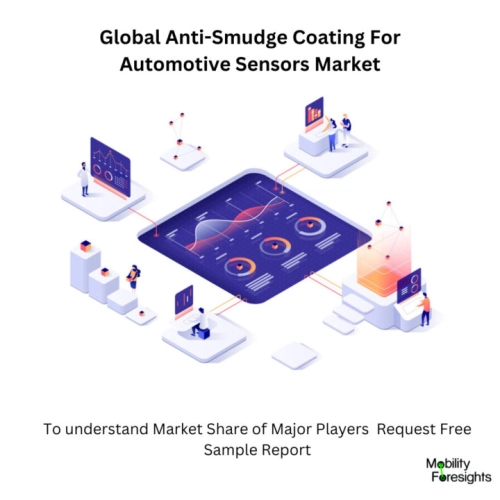
- Get in Touch with Us

Last Updated: Apr 25, 2025 | Study Period: 2023-2030
The description of coating formulations based on polyurethane and epoxy provides transparent, resistant, amphiphilic coatings and adhesives.
Hexadecane and water both effortlessly glide off of these surfaces without leaving a trace. Coatings with thicknesses between 10 nm and 10 m showed good transmittance characteristics.
These films demonstrated strong adherence to glass surfaces, abrasion resistance, ink resistance, anti-graffiti, and anti-fingerprint properties.
The coatings can be used to create optically clean, stain- and smudge-resistant surfaces on electronic gadgets, textiles, glass, and other materials.
Mobile phones, tablets, and other handheld electronic device screens and surfaces are vulnerable to fingerprint and smudge buildup.
High-rise building windows may become stained as a result of dust buildup from rain or ice particles. Mud and dust settle on car bodywork and windscreens, making them unclean. Such accumulations lessen our enjoyment of goods by detracting from their visual attractiveness.
The display quality degrades and one's ability to use the gadget or drive the vehicle is hampered when these deposits build up on the displays of handheld electronic devices or on windows and windscreens.
Anti-smudge coatings that are also optically clear and long-lasting can solve all these problems.
There aren't any long-lasting optically clear and amphiphilic (oil- and water-repellent) coatings available for handheld electronic devices, windscreens, or high-rise building windows right now.
Liquids with perfluoropolyether-silane bases are offered for sale as coatings for portable electronic gadgets. Due to their lack of wear resistance, these coatings have limited application.
The usual polyurethane or epoxy coating has some water resistance but no oil resistance. As a result, neither polyurethane nor epoxy coatings are amphiphilic.
A polyol with an average of two or more hydroxy groups per molecule (Râ²â(OH)n with n 2) and an isocyanate with two or more isocyanate groups per molecule (Râ(NCO)n with n 2) can be combined to create polyurethanes. A catalyst is optional.
The kinds of isocyanates and polyols used to make polyurethane have a significant impact on its qualities.

The Global Anti-smudge coating for Automotive sensors market accounted for $XX Billion in 2022 and is anticipated to reach $XX Billion by 2030, registering a CAGR of XX% from 2023 to 2030.
NEW PRODUCT LAUNCH
At the North American International Auto Show, which will take place at the Cobo Center in Detroit, PPG Industries, Inc.
PPG will present its most recent technological advancements in Anti-smudge coating for Automotive sensor, connected, electrified, and shared automobiles.
New technologies that will be displayed include stackable functional coatings for vehicle interiors, visibility-enhancing coatings for autonomous driving, and cathode coating for electric vehicle batteries.
An adaptable and profitable alternative to traditional cathode binders is cathode coating. Its safety advantages shorten battery life and cut mixing times by up to 90%.
PPG Envirocron Extreme Protection powder coating is a dual-coat technology that offers high-tensile automotive coil springs corrosion and chip resistance coatings.
Visibility-improving coatings also help autonomous vehicles better detect other vehicles and obstacles using their sensors.
Inclement weather is kept at bay by its composite coatings and easy-to-clean lenses. PPG Industries' Stackable functional coatings increase the look, feel, comfort, and utility of interior surfaces for vehicle interiors in order to fulfill the demands of modern mobility through revolutionary coatings.
These coatings also include soft-touch paints, transparent protective coatings, anti-reflective coatings, and coatings that are anti-fingerprint and anti-glare. These coatings can be combined into layered, pre-stacked solutions for simplicity of application.
| Sl no | Topic |
| 1 | Market Segmentation |
| 2 | Scope of the report |
| 3 | Abbreviations |
| 4 | Research Methodology |
| 5 | Executive Summary |
| 6 | Introduction |
| 7 | Insights from Industry stakeholders |
| 8 | Cost breakdown of Product by sub-components and average profit margin |
| 9 | Disruptive innovation in the Industry |
| 10 | Technology trends in the Industry |
| 11 | Consumer trends in the industry |
| 12 | Recent Production Milestones |
| 13 | Component Manufacturing in US, EU and China |
| 14 | COVID-19 impact on overall market |
| 15 | COVID-19 impact on Production of components |
| 16 | COVID-19 impact on Point of sale |
| 17 | Market Segmentation, Dynamics and Forecast by Geography, 2023-2030 |
| 18 | Market Segmentation, Dynamics and Forecast by Product Type, 2023-2030 |
| 19 | Market Segmentation, Dynamics and Forecast by Application, 2023-2030 |
| 20 | Market Segmentation, Dynamics and Forecast by End use, 2023-2030 |
| 21 | Product installation rate by OEM, 2023 |
| 22 | Incline/Decline in Average B-2-B selling price in past 5 years |
| 23 | Competition from substitute products |
| 24 | Gross margin and average profitability of suppliers |
| 25 | New product development in past 12 months |
| 26 | M&A in past 12 months |
| 27 | Growth strategy of leading players |
| 28 | Market share of vendors, 2023 |
| 29 | Company Profiles |
| 30 | Unmet needs and opportunity for new suppliers |
| 31 | Conclusion |
| 32 | Appendix |